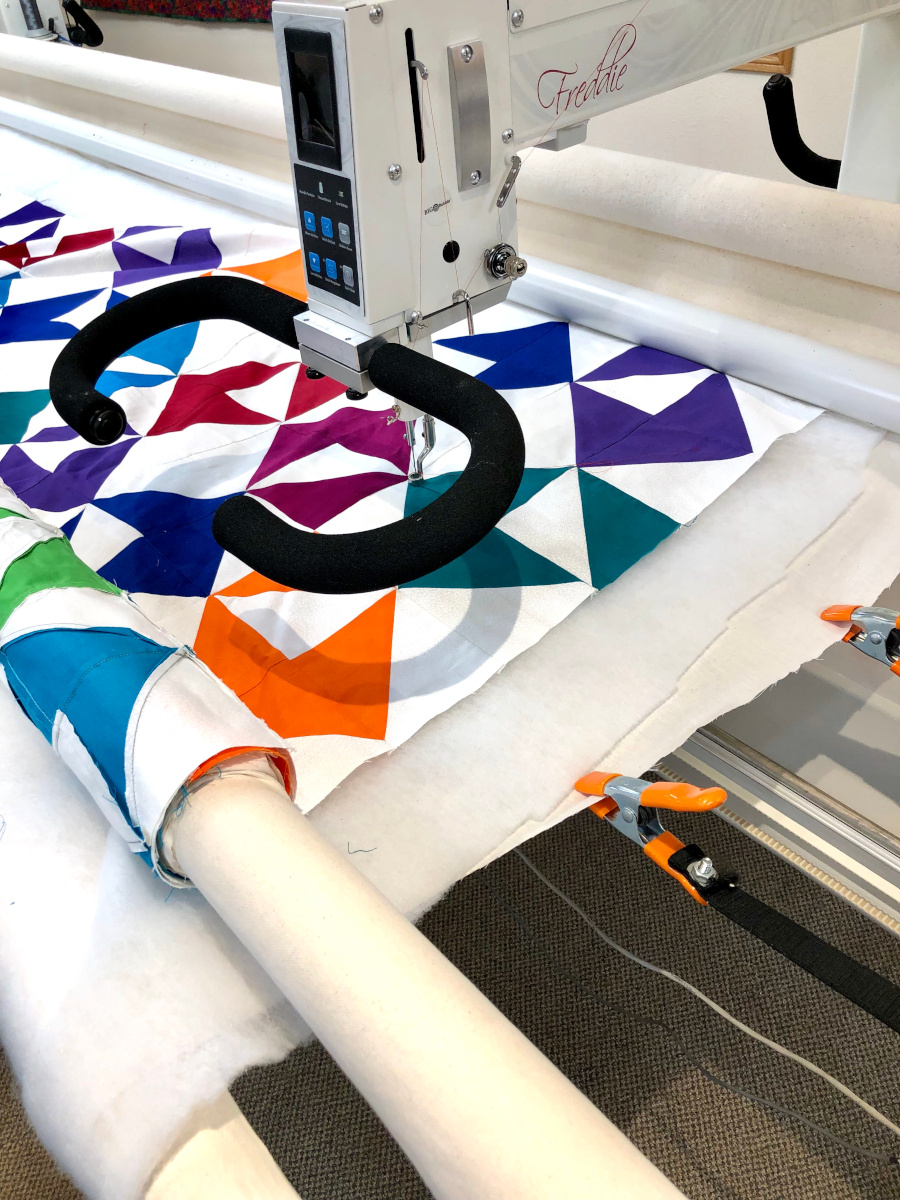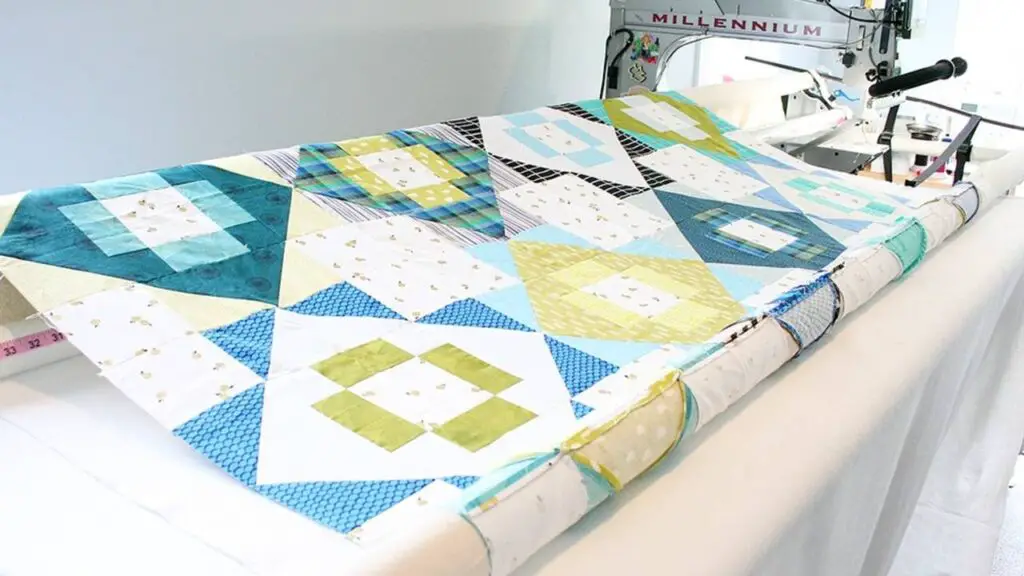If you’ve ever been curious about the art of quilting, you’ll be pleased to know that there are many options available to make quilting easier and more efficient. One of the most popular tools used by quilters is a Grace Frame, which is an adjustable quilting frame that allows you to quickly and easily load a quilt onto the frame. This step-by-step guide will show you how to load a quilt onto a Grace Frame, so you can get started on your quilting project right away!
Preparation

Choose Fabric
When preparing to load a quilt onto a Grace frame, the first step is to choose the fabric. It is important to select a fabric that is not too heavy, as this can make it difficult to work with the frame. Consider a medium-weight fabric that is not too stiff, but still has enough body to provide support for the quilt backing.
Assemble Grace Frame
Once the fabric has been selected, it is time to assemble the Grace frame. Begin by attaching the four rails to the two poles, making sure the rails are securely locked into place. Next, attach the stabilizers to the four corners, and then attach the two cross bars to the top of the frame. Finally, attach the clamps to the rails, ensuring that they are securely tightened. Once the frame is assembled, it is ready to be loaded with fabric.
Loading Quilt onto Frame

Secure Fabric to Hoop
Using the quilting hoop, secure the fabric in the center. Pull the fabric taut with both hands and make sure that the fabric is evenly distributed across the hoop.
Attach Hoop to Frame
Position the hoop onto the frame and lower it onto the frame. Secure the hoop firmly onto the frame using the provided screws. Tighten the screws until the hoop is firmly secured.
Adjust Tension
Using the provided tension knobs, adjust the tension of the fabric until it is evenly taut across the frame. Make sure that the fabric is not too tight or too loose.
Secure Fabric to Frame
Using the provided clips, secure the fabric to the frame. Place the clips along the edges of the fabric to ensure that the fabric is firmly secured to the frame. Make sure that the clips are evenly spaced out.
Finishing Touches
Make Final Adjustments
Adjust your quilt fabric along the edges of the frame, making sure that it sits flush. If necessary, use a sewing awl to apply extra tension to the fabric.
Trim Excess Fabric
Once the fabric is taut, use a pair of scissors to trim off excess fabric, leaving a 1-inch margin around the frame.
Frequently Asked Questions
What type of quilt should I use?
-
Quilting Cotton: Quilting cotton is the most commonly used fabric for quilting and can be used on any Grace Frame. It is lightweight and easily maneuvered, making it an ideal choice for quilters of all levels.
Batting: Batting is a layer of insulation that goes between the quilt top and the backing fabric. It can be made from cotton, wool, polyester, or a mix of fabrics. If you’re using a Grace Frame, make sure to choose a batting that is lightweight and doesn’t add too much bulk to your quilt.
Backing Fabric: The backing fabric should be durable and able to withstand a lot of wear and tear. Quilting cotton, canvas, and denim are all popular choices for backing fabric. Make sure to choose a fabric that is the same size as your quilt top or a bit larger so that it can easily be loaded onto the Grace Frame.
Thread: The type of thread you use will depend on the fabric you choose. Choose a quilting thread that is designed for piecing and quilting. Polyester, cotton-wrapped polyester, and cotton threads are all good choices.
What kind of fabric do I need?
- Cotton Fabric – Cotton fabric is a great choice for quilt-making. It is lightweight and easy to sew. It comes in a variety of colors, prints, and textures, making it easy to find something that suits your project.
- Linen Fabric – Linen fabric is a great choice for quilts. It is a very durable fabric and will last longer than cotton. It also has a unique look that can make your quilt stand out.
- Wool Fabric – Wool fabric is a great choice for quilting. It is heavier than cotton, so it can add weight to your quilt. It is also very warm and breathable, making it a great choice for winter quilts.
- Fleece Fabric – Fleece fabric is a great choice for quilting. It is lightweight and warm, making it perfect for winter quilts. It is also very durable, so it will last for many years.
- Silk Fabric – Silk fabric is a luxurious choice for quilting. It is lightweight and very soft, making it perfect for bed quilts. It can also be dyed in a variety of colors, so you can find something to match your decor.
How do I know when the quilt is properly loaded?
- Fabric is evenly distributed: Look for any areas where the quilt is bunched up or folded and adjust accordingly.
- Quilt is taut: Ensure the quilt is stretched tight and there are no loose wrinkles or folds.
- Backing is smooth: Check that the backing fabric is smooth and flat across the frame.
- Basting pins are in place: Make sure all basting pins are in place and the quilt is secured.
- Edges are even: Look for any areas where the quilt is not lined up properly with the frame and adjust accordingly.
Are There Any Tips for Securing the Quilt in Place?
To secure the quilt in place, you will need to use a basting spray, quilt clips, or quilt pins. Basting spray is a temporary adhesive that is sprayed onto the fabric to hold the quilt in place. Quilt clips are small plastic clips that are attached to the fabric to hold the quilt in place. Quilt pins are used to pin the fabric to the batting and backing. You can also use a quilt hoop or frame to secure the quilt in place.
What if my quilt is too big for the frame?
- Measure the quilt: Measure the quilt and compare it with the frame. If the quilt is bigger than the frame, you need to resize it.
- Resizing the quilt: You can either trim the quilt or attach border strips to the quilt to make it fit the frame.
- Trimming the quilt: If you choose to trim the quilt, make sure to cut the excess fabric from the edges evenly. Make sure to leave at least one-inch border.
- Adding border strips: If you choose to add the border strips, you can either use the same fabric as the quilt or a contrasting fabric. Measure the quilt and cut the strips accordingly. Sew the strips to the quilt and press it.
Conclusion
Loading a quilt onto a Grace Frame is a simple process that requires a few basic steps. With the right tools and materials, you can easily complete the task and ensure that your quilt is securely fastened. By following these steps, you can ensure that your quilt will stay safely secured to the frame as you quilt.






